Cheese is a delicious dairy food that offers a range of nutritional benefits.
However, every variety of cheese is slightly different, and some are superior to others.
One of the very best is Parmesan cheese.
In this article, we will examine the unique health benefits that Parmesan offers alongside the full nutrition profile of the cheese.
What Is Parmesan Cheese?
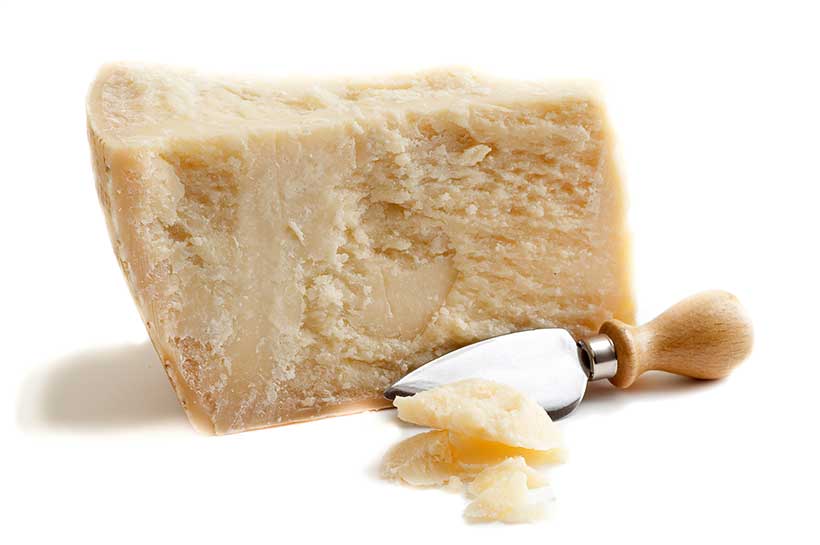
Parmesan is an Italian hard aged cheese, and it undergoes a lengthy aging process that averages two years.
It is also possible to find three or even four-year-old versions of the cheese with an extra sharp flavor.
“Parmesan” is the English name for the cheese, and the original Italian name is Parmigiano-Reggiano.
Notably, the cheese has ‘Protected Designation of Origin’ (PDO) status within the EU.
Under this protection scheme, only cheese made within the following Italian regions may use the name ‘Parmigiano-Reggiano’ or ‘Parmesan’ within the EU (1);
- Bologna
- Mantua
- Modena
- Parma
- Reggio Emilia
However, outside the European Union, the generic term ‘Parmesan’ may be used for cheese that resembles Parmigiano-Reggiano.
For this article, ‘Parmesan’ refers to the original Parmigiano-Reggiano.
How Is It Made?
Parmigiano-Reggiano is made using unpasteurized raw cow’s milk from grass-fed cows.
In winter, the farmers may supplement the cow’s feed with dehydrated grass and hay.
To make the cheese, producers mix the unpasteurized milk with a whey starter and rennet.
During the aging process, a master cheese grader stringently inspects every Parmigiano-Reggiano wheel at the 12-month mark.
This inspection is strict, and if any wheel of cheese has a minor defect, it loses its ‘Parmigiano-Reggiano’ status.
Parmesan has a strong, sharp taste, and its taste notes can vary from slightly sour to nutty flavors.
The texture is hard and crumbly, and longer-aged varieties can be crunchy due to the development of calcium lactate crystals.
Health Benefits
All cheese has certain common characteristics (see this review of the positives and negatives for more information).
However, Parmesan also has some unique benefits due to its production process.
1) Parmesan Is a Rich Source of Protein
Parmesan provides substantial amounts of protein, and it is far higher in protein-density than most other types of cheese.
For example, the following table shows how the protein content of Parmesan compares to other popular varieties of cheese (2, 3, 4, 5).
| Cheese Name | Protein (Per 100 g) |
| Camembert | 19.8 g |
| Cheddar | 24.9 g |
| Mozzarella | 22.2 g |
| Parmesan | 35.8 g |
As we can see, Parmesan is extremely high in protein. It is the most protein-dense among all cheese and also beats any meat on a gram-for-gram basis.
The reason for this is partly down to the aging process and the lack of moisture that Parmesan has.
To be specific, Parmesan has a moisture content of only 30%, which is much lower than other cheese.
2) Easily Digestible Compared To Other Cheese

Some individuals have trouble digesting the dairy protein casein (6).
While Parmesan does contain this same protein, it is in an easier to digest form than other varieties of cheese.
The reason for this is the extensive aging process that Parmesan goes through. During the aging, the lactic acid enzymes created from fermentation break the casein proteins down into smaller proteins (7).
As a result, the casein in Parmesan has almost been “pre-digested” when it enters the body.
However, this easier digestibility is likely to be a feature of the longer-aged cheeses.
The minimum required aging time for Parmesan is 12 months, and the protein breakdown process may only be at an early stage at this time.
To get the full benefits of protein breakdown, a Parmesan aged for two years or more would be a better choice.
3) Contains Minimal Amounts of Lactose
Lactose intolerance is prevalent throughout the world, with an estimated 65% of adults having problems digesting this milk sugar (8).
On the positive side, Parmesan contains virtually no lactose and a much lower amount than other cheese.
In one study, researchers analyzed over 109 samples of cheese for their lactose content.
Among these samples, only six varieties of cheese had “undetectable quantities of lactose,” including Parmigiano-Reggiano (9).
As a result, Parmesan is virtually lactose-free, and research suggests that people with lactose sensitivity should be OK with it (10).
However, in cases where there is a serious intolerance to lactose, it may be better to avoid all dairy.
4) Parmesan Is a Substantial Source of Minerals
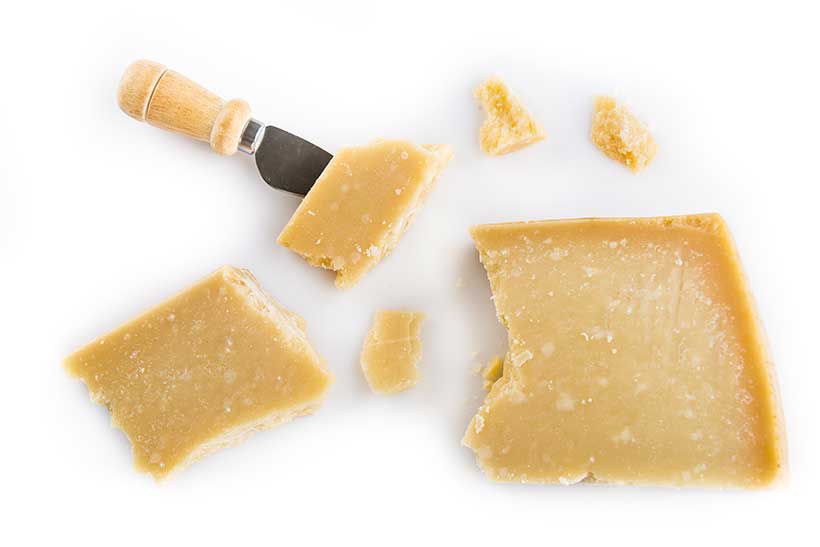
There are seven minerals that humans need to acquire in large amounts.
These minerals include (11);
- Calcium
- Chloride
- Magnesium
- Phosphorus
- Potassium
- Sodium
- Sulfur
On the positive side, Parmesan supplies an excellent amount of a number of these major minerals (5);
- 118% of the recommended dietary intake (DRI) for calcium
- 11% of the RDI for magnesium
- 69% of the RDI for phosphorus
- 67% of the RDI for sodium
Generally speaking, Parmesan is an excellent source of nutrients, and we’ll look at this in full later on.
5) Contains a Modest Supply of Omega-3
It is difficult to find the pre-formed omega-3 fatty acids DHA and EPA in food other than oily fish and seafood.
Due to the extensive grazing on fresh pasture the Parmesan-producing cows do, Parmesan cheese offers a decent amount of omega-3.
Although it doesn’t come close to oily fish, Parmesan offers a reasonable 190 mg of omega-3 per 100 grams (5).
These fatty acids have potential health benefits, such as reducing triglycerides, reducing inflammation, improving vascular function, and lowering blood pressure (12, 13).
6) Provides a Good Amount of Menaquinone (Vit K2)
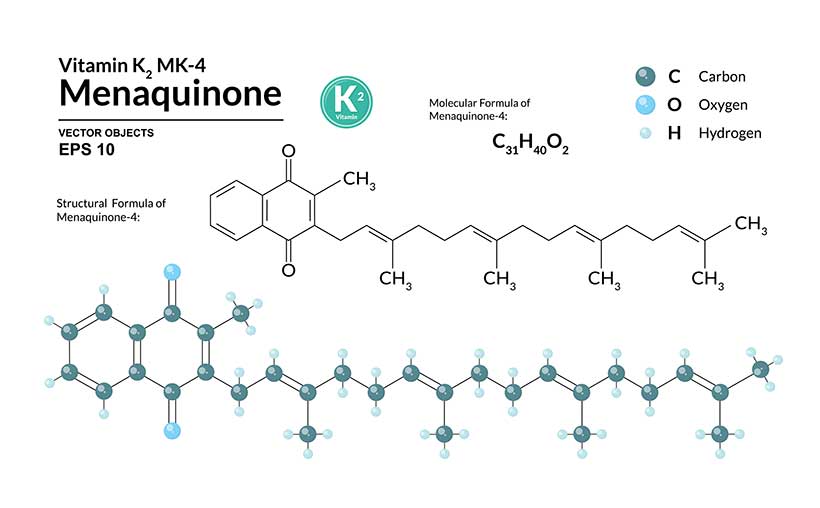
It was once a little-known vitamin, but more people know the importance of vitamin K2 (menaquinone) these days.
For example, vitamin K2 may have benefits regarding (14, 15);
- Helping inhibit calcification of arteries
- Improved bone and muscle health
- Reducing the risk of osteoarthritis
Vitamin K2 forms in animal foods such as meat, dairy, and eggs, and it is especially high in food coming from grass-fed animals.
While soft cheese such as Camembert typically contains the most vitamin K2, hard cheese such as Parmesan also offers a good source (16).
7) A Good Source of Fat
It is easy to hear people discuss how a particular food is a good source of protein or fiber.
However, dietary fats play a beneficial role in our health too.
Parmesan consists mainly of two parts saturated to one part monounsaturated fat, with a small amount of polyunsaturated fatty acids.
Should We Worry About Dairy Fats?
Despite concerns over diets higher in saturated fat, there is debate over the respective health effects of dairy products.
Furthermore, there are various saturated fatty acids, and they may play important roles in processes such as omega-3 synthesis, apoptosis, and fat deposition (17, 18).
Additionally, research shows that cheese appears to be neutral or beneficial for our health.
On this note, several recent systematic reviews found that (19, 20, 21);
- High to moderate quality evidence suggests that high-fat dairy products, including cheese, are associated with a favorable or neutral impact on cardiovascular events.
- Long-term cheese consumption appears to have no adverse impact on cardiovascular risk.
- Dairy products have a positive or neutral impact on cardiovascular health, and fermented dairy seems to be beneficial.
8) Potential Probiotic Benefits
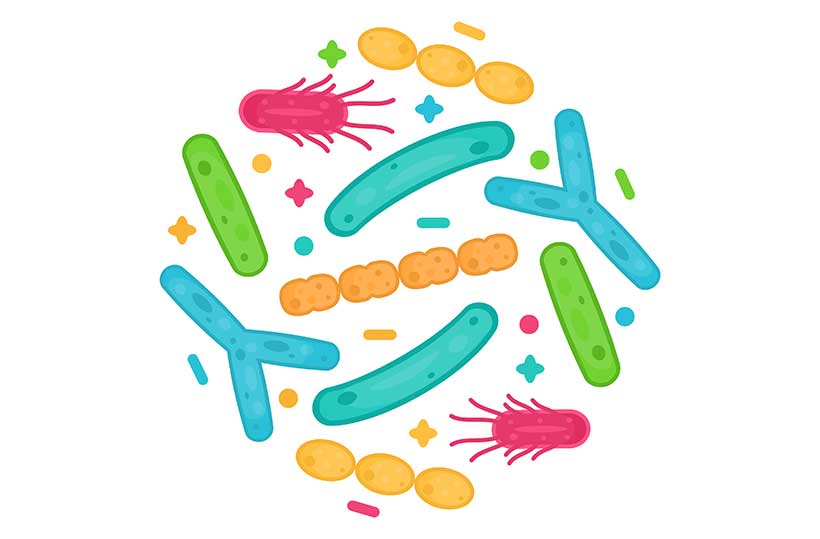
Probiotics have been an area of intense research in recent times, and some researchers believe they can improve our gut (and overall) health.
In short, these probiotics are a form of live bacteria that reside in our gut.
As a fermented food with a long aging process, Parmesan may presumably contain various strains of these bacteria.
One study that analyzed a 12-month aged Parmigiano-Reggiano cheese confirmed this, and it found numerous Lactobacillus bacteria species (22).
Additionally, a systematic review found that lactic acid bacteria consumption from dairy foods is associated with a consistent improvement in gastrointestinal discomfort (23).
However, there is little research specifically on Parmesan in this area.
For more cheese rich in probiotics, unpasteurized cheese like Gruyère may have unique benefits in this area.
9) Improves the Taste of Food
Lastly, Parmesan is a cheap and simple condiment to boost how our food tastes. Using melted Parmesan in a recipe makes any dish taste better.
That said, is improving the taste of food a health benefit?
If it encourages healthier eating, then yes, it can be.
Various favorite meals around the world make use of Parmesan, and it always gives the meal something extra.
Using Parmesan to flavor healthy homemade cooking can make simple food more attractive, which is important to a lot of people.
Nutrition Facts
Now that we have analyzed some of the benefits Parmesan can provide, we’ll now examine the full nutrition profile.
The tables below show the calories, macronutrient and micronutrient composition of the cheese per 100 grams (5).
Calories and Macros
| Calories / Macronutrient | Amount |
| Calories | 392 kcal |
| Carbohydrate | 3.2 g |
| Fiber | 0 g |
| Sugar | 0.8 g |
| Fat | 25.8 g |
| Saturated Fat | 16.4 g |
| Monounsaturated Fat | 7.5 g |
| Polyunsaturated Fat | 0.6 g |
| Protein | 35.8 g |
Parmesan is a rich source of fat and protein, and it contains minimal carbohydrates.
There are also fat-free varieties of Parmesan available, which have a higher protein content and are significantly lower in calories.
Vitamins
| Vitamin | Amount (% RDI) |
| Vitamin B12 | 20 % |
| Vitamin B2 | 20 % |
| Vitamin A | 8 % |
| Vitamin D | 7 % |
| Vitamin B6 | 5 % |
| Vitamin B5 | 5 % |
| Vitamin B1 | 3 % |
| Vitamin K1 | 2 % |
| Folate | 2 % |
| Vitamin B3 | 1 % |
| Vitamin E | 1 % |
Parmesan contains vitamins B12 and B2 in moderate amounts, and smaller quantities of a wide range of vitamins.
Minerals
| Vitamin | Amount (% RDI) |
| Calcium | 118 % |
| Phosphorus | 69 % |
| Sodium | 67 % |
| Selenium | 32 % |
| Zinc | 18 % |
| Magnesium | 11 % |
| Iron | 5 % |
| Potassium | 3 % |
| Copper | 2 % |
| Manganese | 1 % |
Parmesan supplies a broad range of minerals, and it is particularly rich in calcium, phosphorus, selenium, sodium, and zinc.
Final Thoughts
With several proven and potential nutritional benefits and a great nutrition profile, Parmesan is one of the healthier choices of cheese.
On top of that, it tastes delicious and adds a lot of flavor to food.
Among the various cheese options, Parmesan is hard to beat.
For more on Italian cheese, see this guide to ricotta.

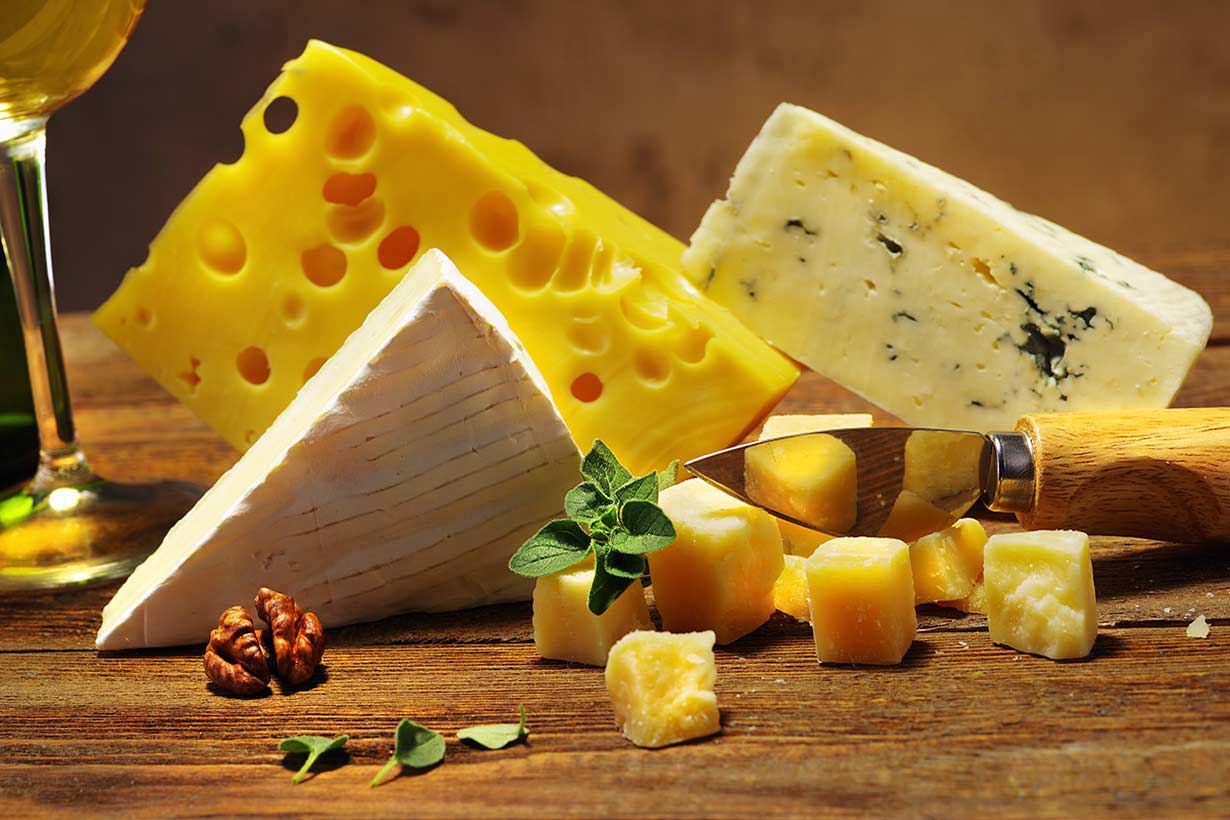
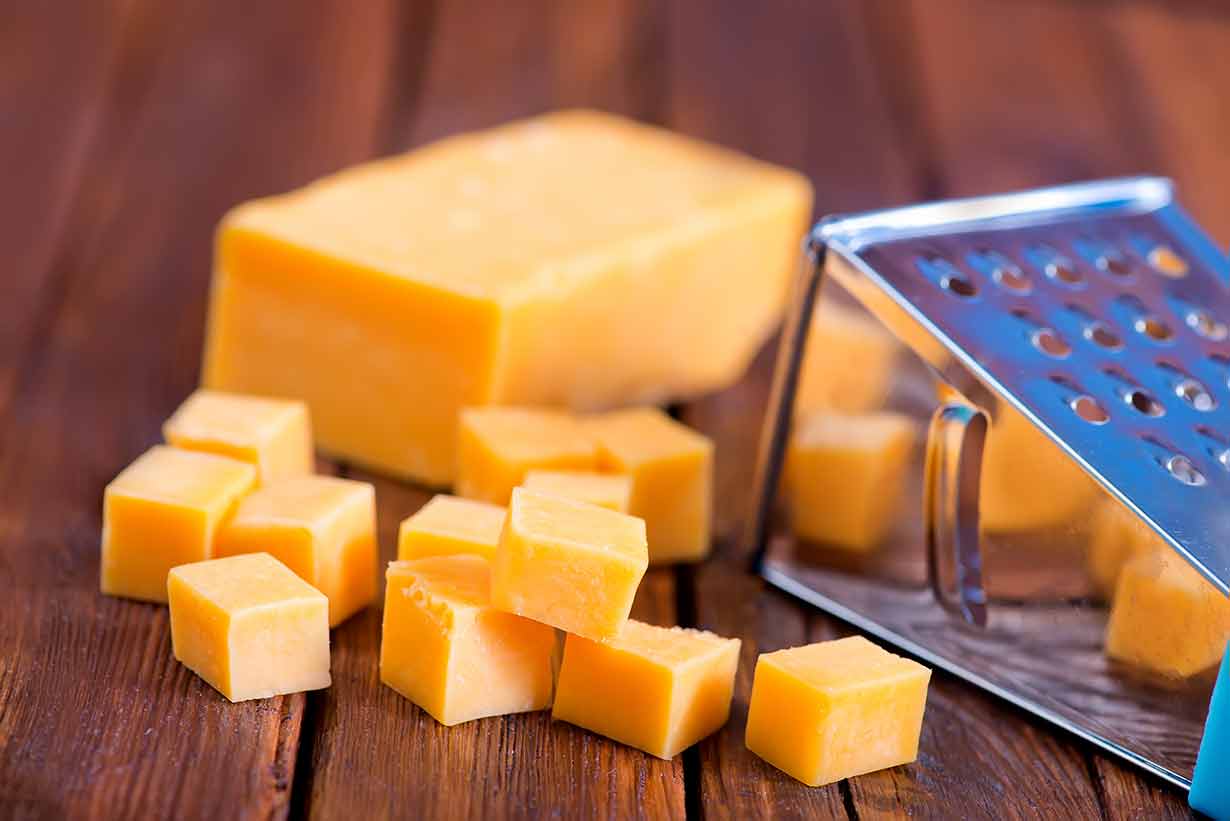
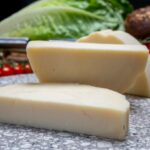
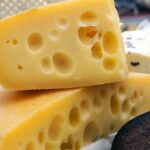
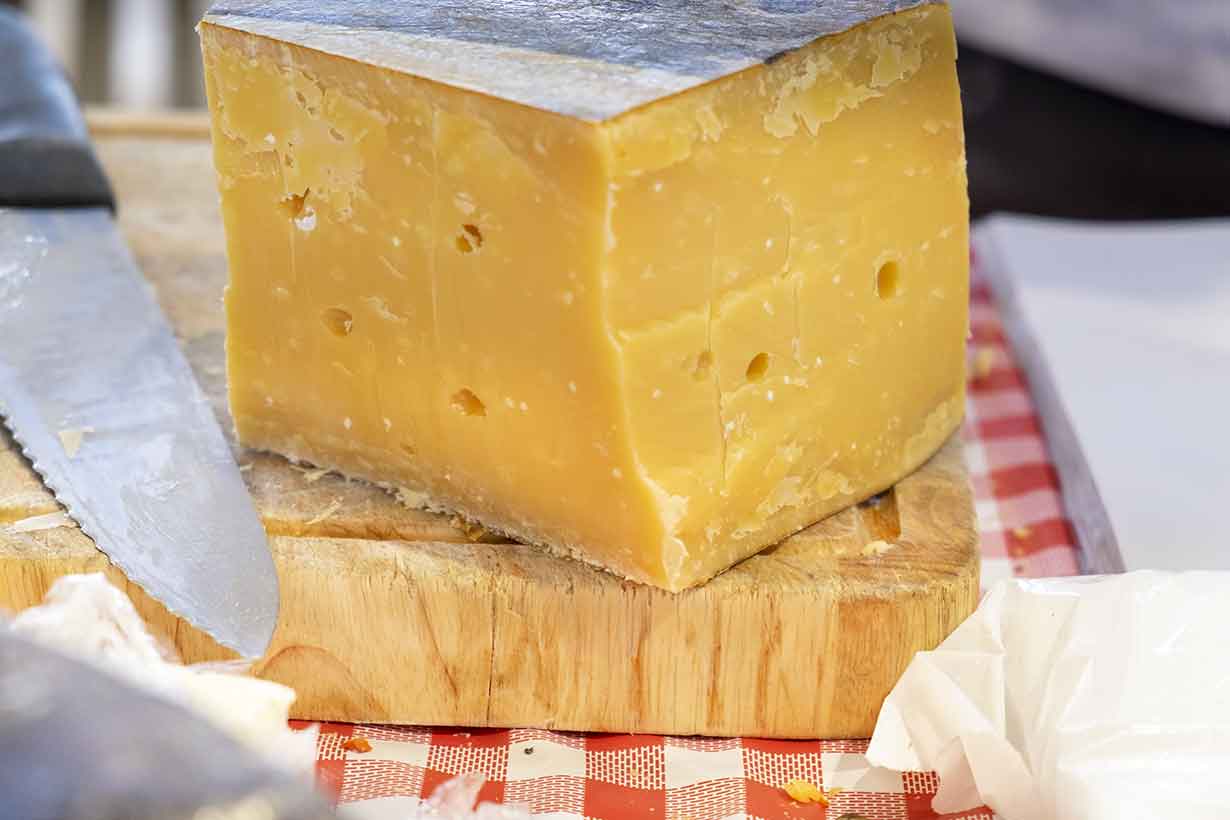
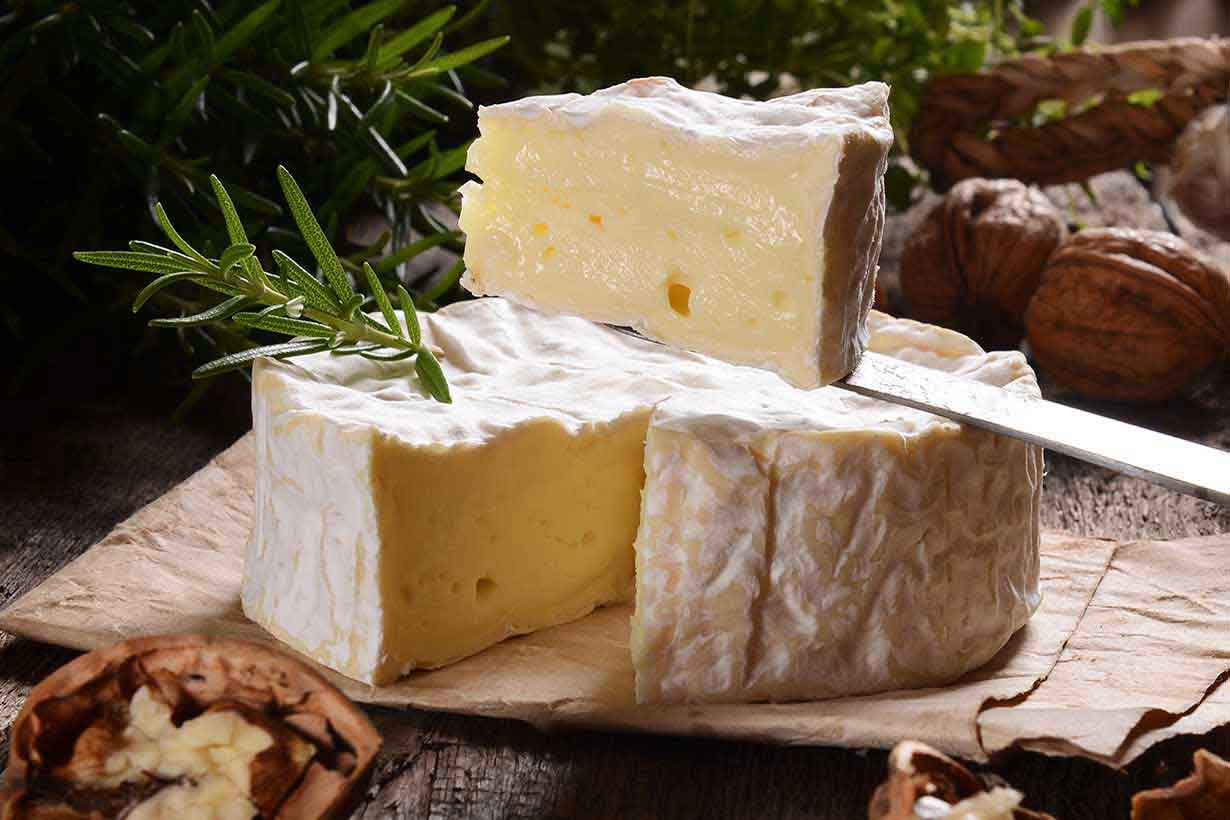

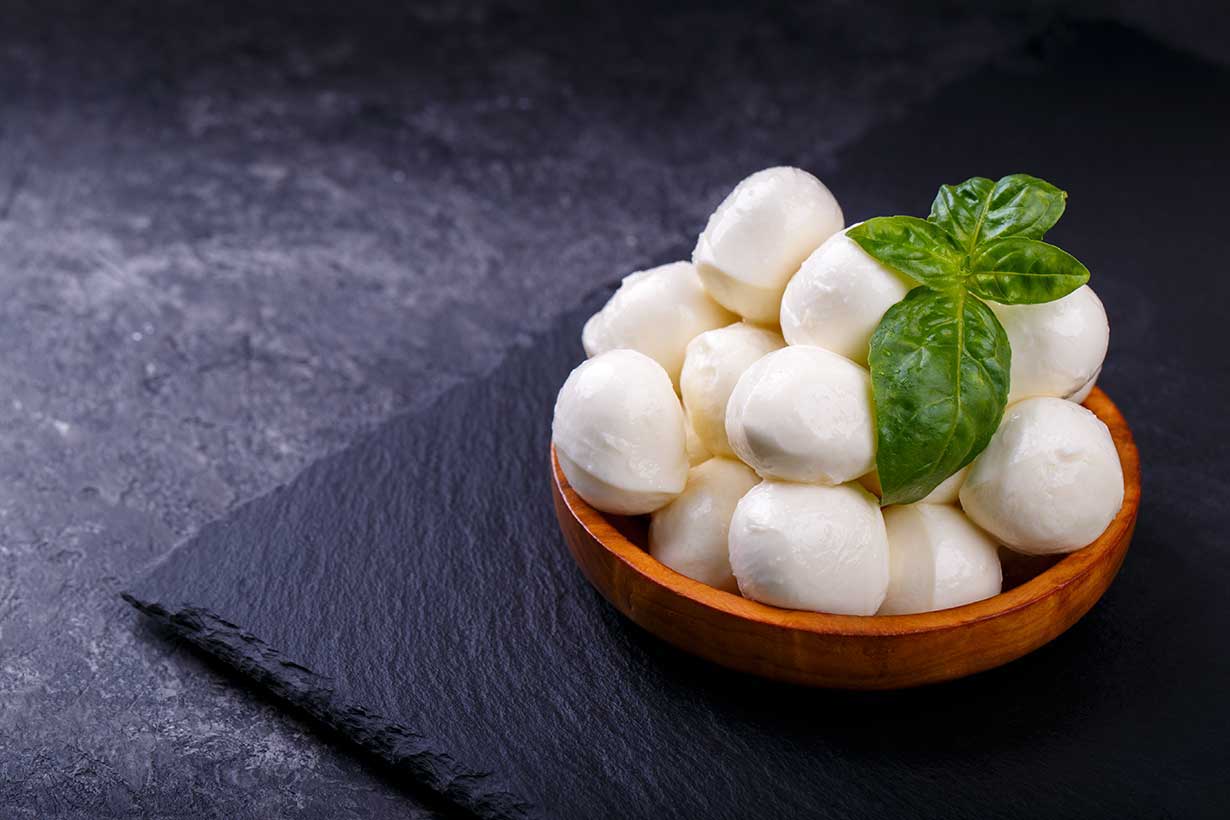
My husband and I love trying new foods while being health-conscious, so I wanted info on key components in Italian food! I didn’t know that parmesan had a lot of protein compared to other types of cheese. I’ll have to keep that in mind and find a restaurant we can go to and try some authentic Italian food.
Parmesan tastes great with almost any Italian food!
Hi
Great article. We use loads of hard Parmesan in our house hold.
I started using diced Parmesan rinds in broths and cheese breads recently.
Doe it have the same macro break down as the typically eaten section?
Thanks for that! The outside rind is the same cheese but it has just been dried out. This may affect the nutritional values slightly but the macro ratios should be similar.